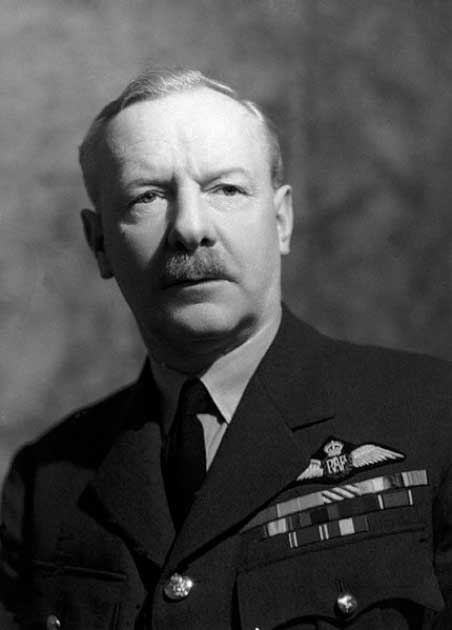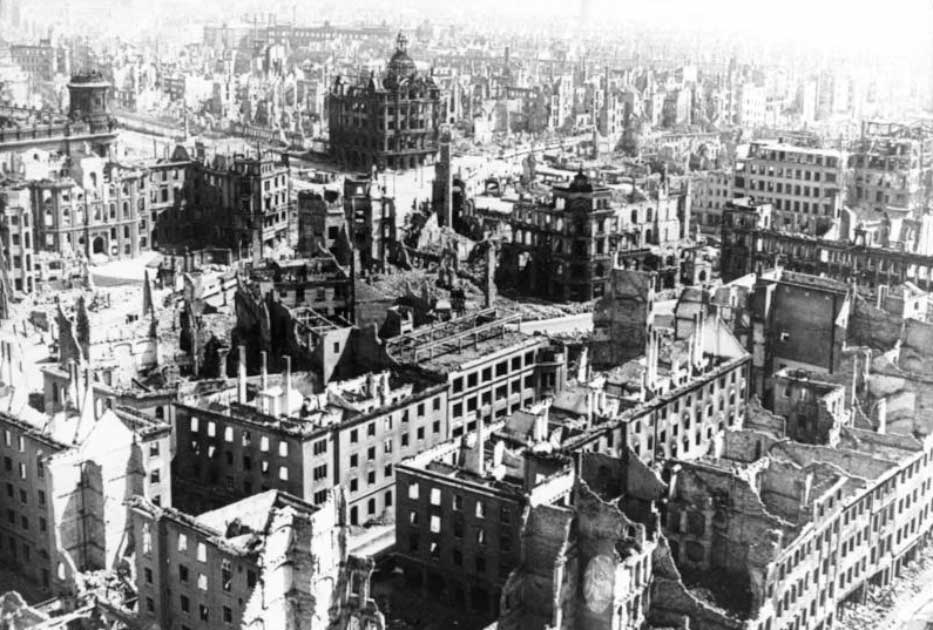History is written by the winners, as they always say. Many have mined the fruitful line of investigation this implies in speculative fiction, such as The Man in the High Castle which explores the nightmare consequences of a Nazi victory in Europe in the 1940s.
Fewer look to the other side of this particular truism, to the actions forgiven by those hell bent on victory at any cost, which are then swept under the carpet amidst the victory they have brought about. But such actions deserve their own assessment, and chief among those in WW2 must be the actions of Air Chief Marshal Sir Arthur “Bomber” Harris, and his approach to warfare.
During World War II, there had been many bombing incidents by the Royal Air Force (RAF) on Nazi Germany. These bombing attacks, and especially the indiscriminate carpet bombing ordered by Harris, were probably the longest, most expensive, and also controversial Allied nation campaigns.
The carpet bombing that happened was greatly aligned towards reducing Nazi Germany’s power which was the central strategy of the countries on the Allied side. But was the damage done, and the cost to innocent lives, worth it?
The Rise of RAF Bomber Command
The Royal Air Force created the RAF Bomber Command in 1936. The Bomber Command was created and comprised of the RAF’s light and heavy bomber squadrons. With larger and more powerful aircraft being developed throughout the inter-war period, it was inevitable that large planes dropping high explosives would become key in taking the fight to your enemy.
Over the course of World War II, the Bomber Command grew from being an ineffective wing of the RAF to a powerful force that was responsible for much of the damage done to Nazi Germany. Britain invested a lot of money and technology into developing the Bomber Command.

But there was a lot to learn. In 1939, the RAF Bomber Command had 23 operational bomber squadrons with around 280 aircraft forming part of the squadron. At first, the bombing raids were carried out in broad daylight. However, RAF bomber aircraft were easy targets for German ships and fighter planes. So, the bomber aircraft switched to flying during the night.
It wasn’t always bombs that the aircraft dropped, either. Particularly in the early stages of the war the aircraft were used to drop propaganda leaflets, in the hope that they could create enough discontent in the German populace to halt the Nazi advance. As the war progressed however this became less popular.
- The Coventry Conspiracy: Did Churchill Let a British City Burn?
- The Mosquito: Britain’s Accidental WW2 Wonder?
In 1940, after Hitler’s Germany led an invasion of France, the RAF started its bombing campaign against Germany in earnest. The bombing incidents were mostly done against legitimate targets, to degrade the economic and industrial capacity of the country.
For example, the RAF bomber aircraft at first targeted the synthetic oil production units in Germany. However, while the RAF had at first thought of hitting specific oil factories first, it could not do so as the fighter pilots failed to identify the locations of particular factories.
Instead of intense, targeted bombing, the bomber aircrafts scattered the bombs far and wide. The Bomber Command lacked the necessary information and precision to do any far-reaching damage.
In 1941, the Bomber Command grew in number and strength. Even though the strength increased, the navigation problem was yet to be solved. The Bomber Command was still facing challenges in moving across night time Europe to find their targets.
The issues that the bomber aircrafts faced in the Battle of the Atlantic and while bombing German U-boats showed where the improvements needed to be made. The Britain RAF needed some improvements to fight against the fighters and anti-aircraft guns that Germany was installing.
In 1942, the Bomber Command went through major changes. There was a new leader, Air Chief Marshal Sir Arthur Harris. The war cabinet desperately needed to make their bombing operations more effective, and it seems that Harris took a leaf from the Nazi playbook: bomb civilian targets.
The team assembled by Harris further focused on area bombing or bombing entire cities of Nazi Germany. It was not just the area factories that were targeted during the night-time bombing, but the entire city, civilian population, infrastructure, the lot.
The RAF strategy was to kill the workers and destroy Germany’s economic lifeline. Without its workforce Germany could not hope to win WWII, and this was a deliberate strategy that Harris deployed to fight against the Germans and win the war.
- Sir Adrian Carton de Wiart: The Unkillable Soldier?
- The Largest Aircraft in WW2: What happened to the “Gigant”?
The Air Chief Marshal further added 1,000 bombers into the Bomber Command and was a strong proponent of such an indiscriminate attack, although he also beefed up attacks against industrial targets such as the factories around Cologne. However that was not all he targeted in that city.
Sir Who was Arthur “Bomber” Harris?
Arthur Harris was born in April 1892 in the city of Cheltenham to the family of an Indian Civil Service man. His education was pursued in England in boarding school, and then he settled in Africa in Rhodesia.
During World War I, Sir Arthur Harris first joined the Royal Flying Corps and gained experience as a fighter pilot on the Western Front. He was quick to see the possibilities of attacking from the air and the revolution this would bring to warfare.
He was called “Bomber” Harris because of his preference for bombing to solve almost any problem. He had shown such inclinations decades earlier, where he felt that aerial attacks could crack the stalemate caused by trench warfare.
In 1918, Arthur Harris became a squadron leader in the RAF. He served as a squadron leader for the next two decades in the Middle East and India. He participated in many battles in his long-serving aviation defense career. In early 1942, the seasoned pilot took up duties as the Commander In Chief of the Bomber Command. To reduce the losses of bomber aircraft, the new Air Chief Marshal implemented a new strategy.
Carpet Bombing of Cologne and Dresden
The air raid on the city of Cologne was what specifically left the Air Chief Marshal with the nickname of “Bomber” Harris. The raid he led in the city of Cologne left the city with massive losses and devastation for the Germans.
This was the first thousand bomber raid that was carried out under the leadership of Sir Arthur “Bomber” Harris. After that, the RAF troops carried out some type of raids on different cities in Nazi Germany.

Because of the change in tactics and approach, these raids successfully brought Britain and the Allied Forces into the World War II battleground. At first, Sir Arthur Harris enjoyed much public support from the Government. However, the Germans managed to fight back and with bomber losses mounting Harris faced criticism for his lack of precision.
The most controversial air strike carried out under Sir Arthur Harris’s leadership was the attack and bombing of the city of Dresden in February 1945. The air strike destroyed the city of Dresden completely and is considered one of the most heinous war crimes of WWII.
While “Bomber” Harris was an efficient leader and enjoyed a lot of loyalty from his men, his tactics and strategies were questioned in the closing phase of the war as the raids were not just expensive but also crossed lines of morality. For humanitarian reasons, the carpet bombing of German cities, especially Dresden, is seen as a controversial historic event.
Top Image: The Avro Lancaster, the largest bomber built by the British in WW2, brought destruction to Nazi Germany. Source: Airwolfhound / CC BY-SA 2.0.
By Bipin Dimri